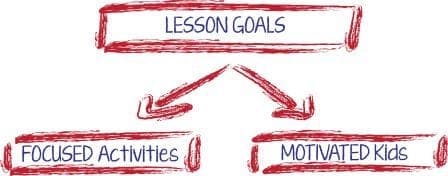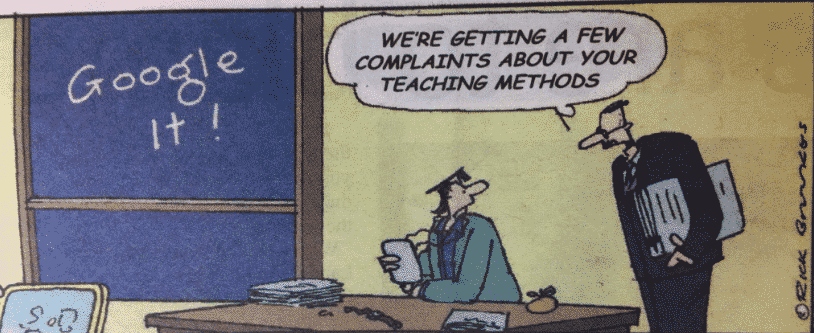There are a lot of elaborate theories and vogue words that try to describe what good teaching entails. Sadly, some of them have little, if any grounding in evidence at all. Others do, but they are difficult to carry out and their effects are small.
A teacher has limited time, and this makes your time a valuable commodity. When you choose to spend your time on one thing, there will be other things you end up not doing. Therefore, it is essential that you know what teaching strategies have the most impact on student learning. Collectively, I call these strategies the foundations of good teaching.
Why? Because they are essential. Many of the more progressive and elaborate teaching approaches depend upon them. Without a strong foundation, higher-order teaching strategies don’t work. These strategies do not cover the breadth or complexity of great teaching; however, the capture the crucial core of what good teaching entails. If you ever find yourself with limited time, these are the seven strategies you should never forego.
Good Teaching Strategy #1: Effective Lesson Goals
You should write a goal for every lesson, or at least for each small series of lessons.
For those goals to be effective, they must clarify what success (and therefore, failure) entails. What is that you want your students to know? How will they have to show such understanding? What practical things must they be able to do? This clarity helps you focus your teaching activities, and to make choices about the relevance of tangents and on-the-spot ideas. It also helps your students to understand why a certain activity is important.

It is also important that your goals are challenging. When goals are challenging, and students know their success or failure will be clearly apparent, it motivates students to do what it takes to succeed. Goals that are easy don’t do this. Goals that are too hard don’t work either.
If you get stuck for time, it is better to write a goal-focused plan than to write topic headings and activities.
You can read more here and you can have a look at a sample goal-based daily plan here.
Good Teaching Strategy #2: Appropriate Teacher Instruction
Students need to be explicitly taught what they need to know and explicitly shown how to do the things they must be able to do.
Too often, well-intentioned teachers send their students off to do independent tasks (either individually or in groups) that they are not adequately prepared for.
Appropriate instruction includes sharing, modelling, explaining and providing worked examples. Of course, there is more to teaching than these traditional forms of instruction. However, they remain critical as they allow you to gradually release responsibility for learning to your students rather than throwing them in the deep end.

Your students need you to teach them before they consolidate and expand their understanding on their own. When doing so, you must deliver your instruction in small chunks (5-15 min), not long lectures. It is also a good idea to use visual diagrams to represent your ideas whenever you can.
Good Teaching Strategy #3: Genuine Mental Engagement

You need to get your students engaging with the material you have taught them, and you must ensure that their engagement is real.
Things such as physical movement, using computers and group work may give the appearance of engagement, but looks can be deceiving. Authentic learning occurs when students mentally respond to what they have been told or shown. It is this mental engagement that is critical.
When interacting with new material, you can engage students through having them:
When trying to help students gain a deeper understanding of the material they have already touched on, you should get them to engage with the material by having them make connections between different chunks of information. For example, you could have them:
Can some of these activities be done in groups? Yes, they can! However, it is important to note that:
Good Teaching Strategy #4: Plenty of Practice

Technically, practice is a form of engagement; however, it is worth mentioning on its own for two reasons. The first of these is that practice refers to what students must be able to, rather than what they must know and understand. Secondly, practice, in its own right, has a strong connection with student achievement.
Within a single lesson, you get students to practice things after you have shown the students how to do. Within the popular I Do WE Do YOU Do model:
However, practising things once during a single lesson is not enough. Students need to practice doing something several times, over different days.
Research shows that it is a good idea to practice new material at the start of subsequent related lessons. However, it also shows that mixed revision sessions (i.e. sample questions from different topics or even different subjects) are powerful as well. Students tend to do worse but learn more when completing mixed revision sessions.
Good Teaching Strategy #5: Feedback

There is a well-known saying that practice makes perfect. As you saw above, practice really is an essential part of learning. However, in the words of renowned psychologist Tony Buzan, practice only leads to repetition – not perfection.
If you are doing a set task correctly or well, then practice will help you. However, if you are doing it wrong (or poorly), then your practice only leads to repeating the wrong thing.
This is why it is crucial that you give your students feedback on their practice attempts. Feedback allows them to learn from their mistakes and refine their efforts accordingly. Furthermore, research repeatedly shows that feedback is one the most effective (if not the most effective) teaching strategies you can use.
There are many subtle nuances and complexities involved in giving good feedback (see How to Give Feedback to Students – the Advanced Guide). However, it basically involves:

First you teach them, then you get them to practice, then you give them feedback, and finally, you get them to do a similar task again.
Good Teaching Strategy #6: Relevant Homework
Is homework worth it? The answer is that it depends. The homework set by secondary teachers has a large impact on students’ subsequent results. However, this is not the case for homework set in primary schools.
Therefore, secondary teachers should continue giving homework in the way that they traditionally do. However, the advice for primary teachers is not so clear cut. Most primary schools require you to set homework, and many parents expect it.
If you are a primary teacher and you are going to set homework, you must make sure it is relevant – that is, the homework must be directly related to what you have taught the kids in class. Typical homework sheets, spelling words only learned at home, and random research tasks are not the way to go. Try setting practice questions of tasks students have recently mastered, or give them activities (see above) to re-engage with material already covered.
References
Archer, A. L., & Hughes, C. A. (2011). Explicit Instruction: Effective & Efficient Teaching. New York: Guilford Press.
Cooper, H. (2007). The Battle Over Homework. Thousand Oaks: Corwin Press.
Hattie, J. (2013). Visible Learning: A Synthesis of 800 Meta-Analyses Relating to Achievement. Routledge.
Marzano, R. J. (1998). A Theory-Based Meta-Analysis of Research On Instruction. Aurora, Colorado: Mid-Continent Regional Education Lab.
Rosenshine, B. (2012). Principles of Instruction: Research-Based Strategies That All Teachers Should Know. American Educator, Spring, 12-20.
